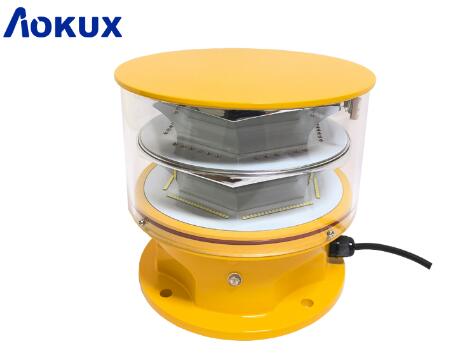
Tower lights aviation play a vital role in marking tall structures to ensure the safety of air traffic. These lights, often referred to as obstruction or aircraft warning lights, are essential for preventing collisions and guiding pilots during low-visibility conditions. This article explores the significance of aviation tower lights, their types, regulatory frameworks, and technological advancements.
The Significance of Aviation Tower Lights
The primary function of aviation tower lights is to make tall structures such as communication towers, skyscrapers, wind turbines, and transmission lines visible to pilots. This is especially crucial during night-time operations, poor weather conditions, or in densely built-up areas. The key reasons for their importance include:
Collision Prevention: By clearly marking the presence of tall structures, aviation tower lights help prevent potential collisions with aircraft. This is critical in maintaining the safety of both manned and unmanned aerial vehicles.
Aid in Navigation: For pilots, especially those operating at low altitudes or in unfamiliar areas, these lights provide essential visual cues. This helps in maintaining safe flight paths and avoiding obstacles.
Regulatory Compliance: Most countries have strict regulations mandating the installation of aviation lights on structures that pose potential hazards to air navigation. Compliance with these regulations ensures that the structures meet safety standards and avoid legal penalties.
Enhanced Visibility: In urban areas or near airports, where the density of tall structures is high, aviation lights ensure that each structure is visible, thereby reducing the risk of accidents.

Types of Tower Lights aviation
Aviation tower lights come in several types, each designed to fulfill specific requirements and adhere to regulatory standards. The primary categories include:
Low-Intensity Lights: Typically red, these lights are used for structures that are relatively short or in less critical areas. They operate at night and in low-visibility conditions to signal the presence of an obstruction.
Medium-Intensity Lights: These lights can be white or red and are used for taller structures. White lights are often used during the day, while red lights are used at night. Medium-intensity lights provide greater visibility and are suitable for structures in moderately critical locations.
High-Intensity Lights: These are extremely bright lights used for very tall structures, such as communication towers and high-rise buildings. High-intensity lights are usually white and can be seen from long distances, ensuring maximum visibility.
Dual Lighting Systems: These systems combine different types of lights to provide continuous visibility under various conditions. For instance, a dual system might use white medium-intensity lights during the day and red low-intensity lights at night.
Solar-Powered Lights: In remote or off-grid locations, solar-powered lights offer a sustainable solution. Equipped with solar panels and batteries, these lights ensure continuous operation without the need for external power sources.
Regulatory Frameworks
The implementation of aviation tower lights is governed by stringent regulations set by various aviation authorities to ensure consistency and safety. Key regulatory bodies and their guidelines include:
Federal Aviation Administration (FAA): In the United States, the FAA mandates the marking and lighting of structures that exceed 200 feet in height or are near airports. The FAA Advisory Circular AC 70/7460-1L provides comprehensive guidelines on the types, colors, and placement of aviation lights.
International Civil Aviation Organization (ICAO): ICAO sets international standards for aviation safety, including the marking and lighting of obstacles. These standards, detailed in Annex 14 to the Convention on International Civil Aviation, ensure a uniform approach to aviation lighting globally.
Civil Aviation Authorities (CAA): Many countries have their own civil aviation authorities that enforce regulations similar to those of the FAA and ICAO. For instance, the UK CAA has specific guidelines for the lighting of tall structures to prevent hazards to air navigation.
European Aviation Safety Agency (EASA): EASA sets the standards for aviation safety in Europe, including obstruction lighting requirements. EASA’s regulations are aligned with ICAO standards to ensure international consistency.
|
tower lights aviation |
low in |
| medium in | high in |
| 810 | 864 |